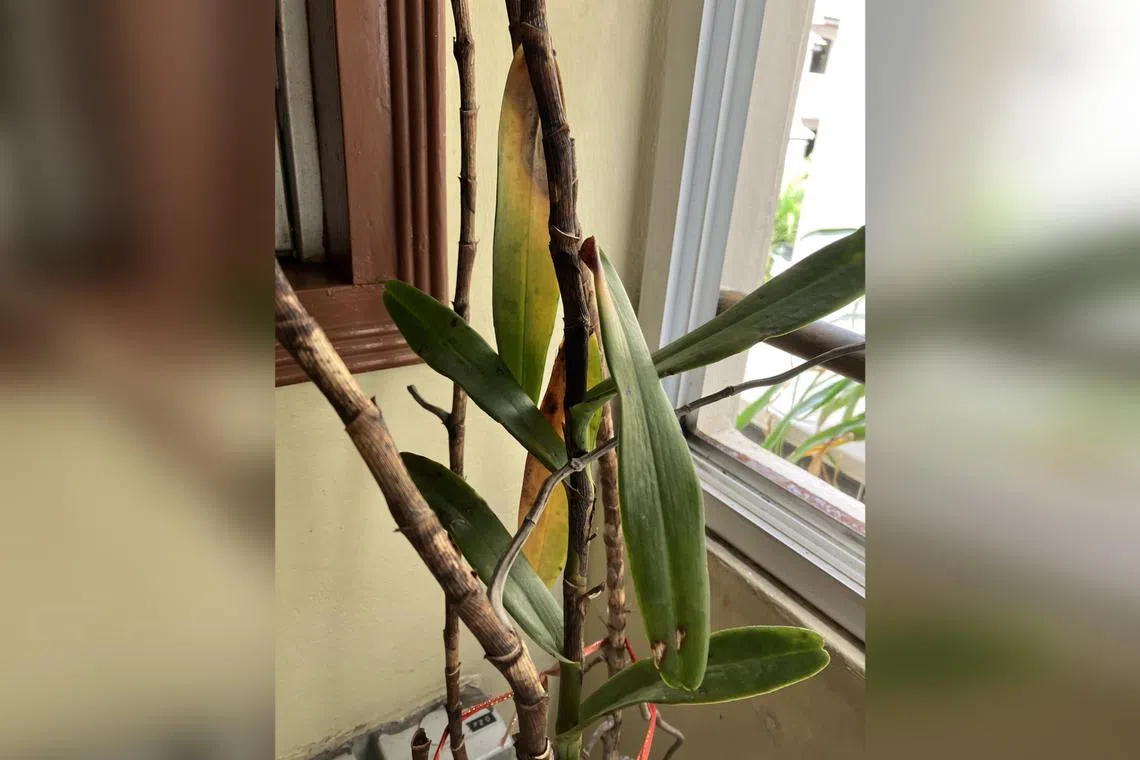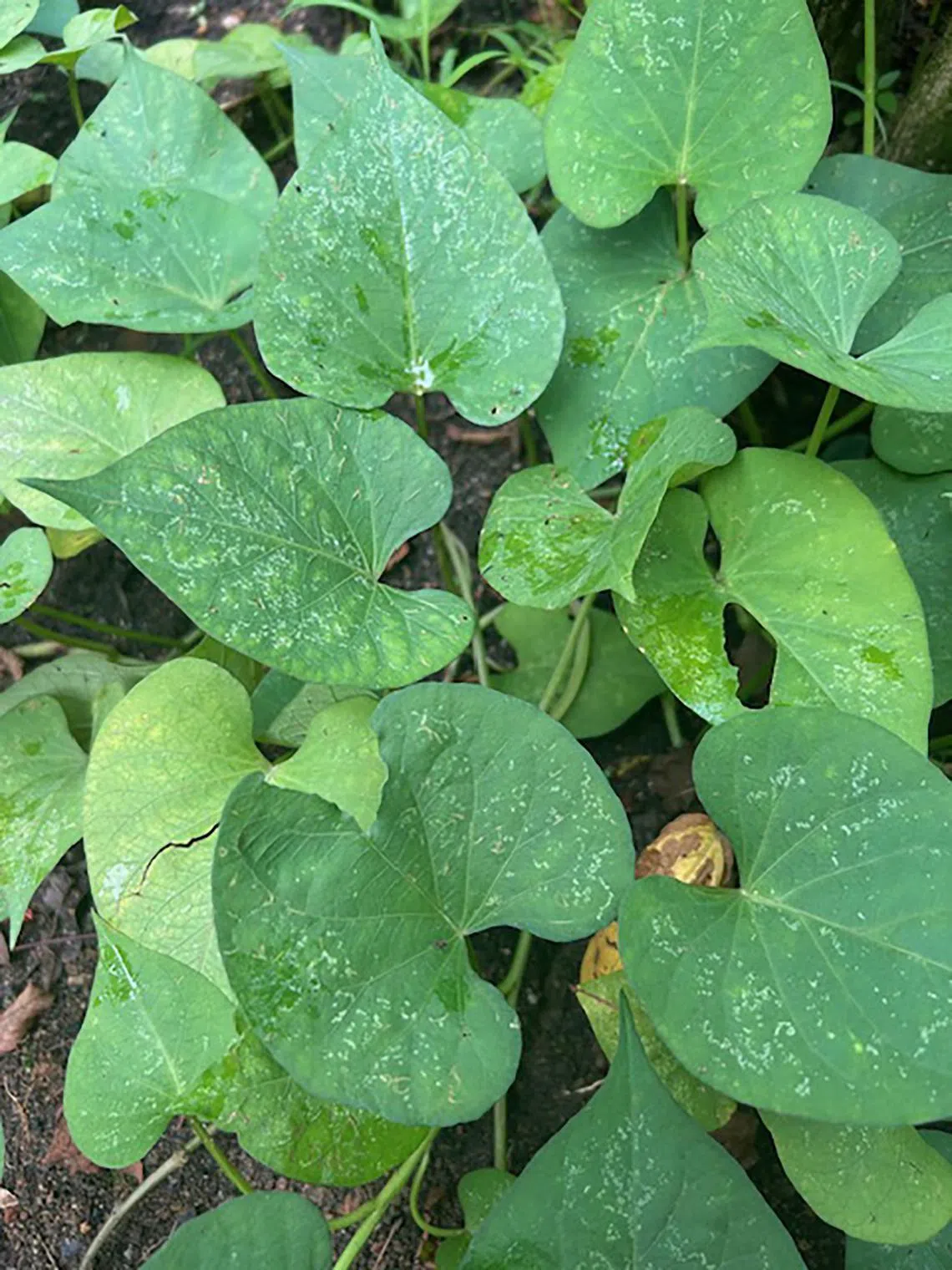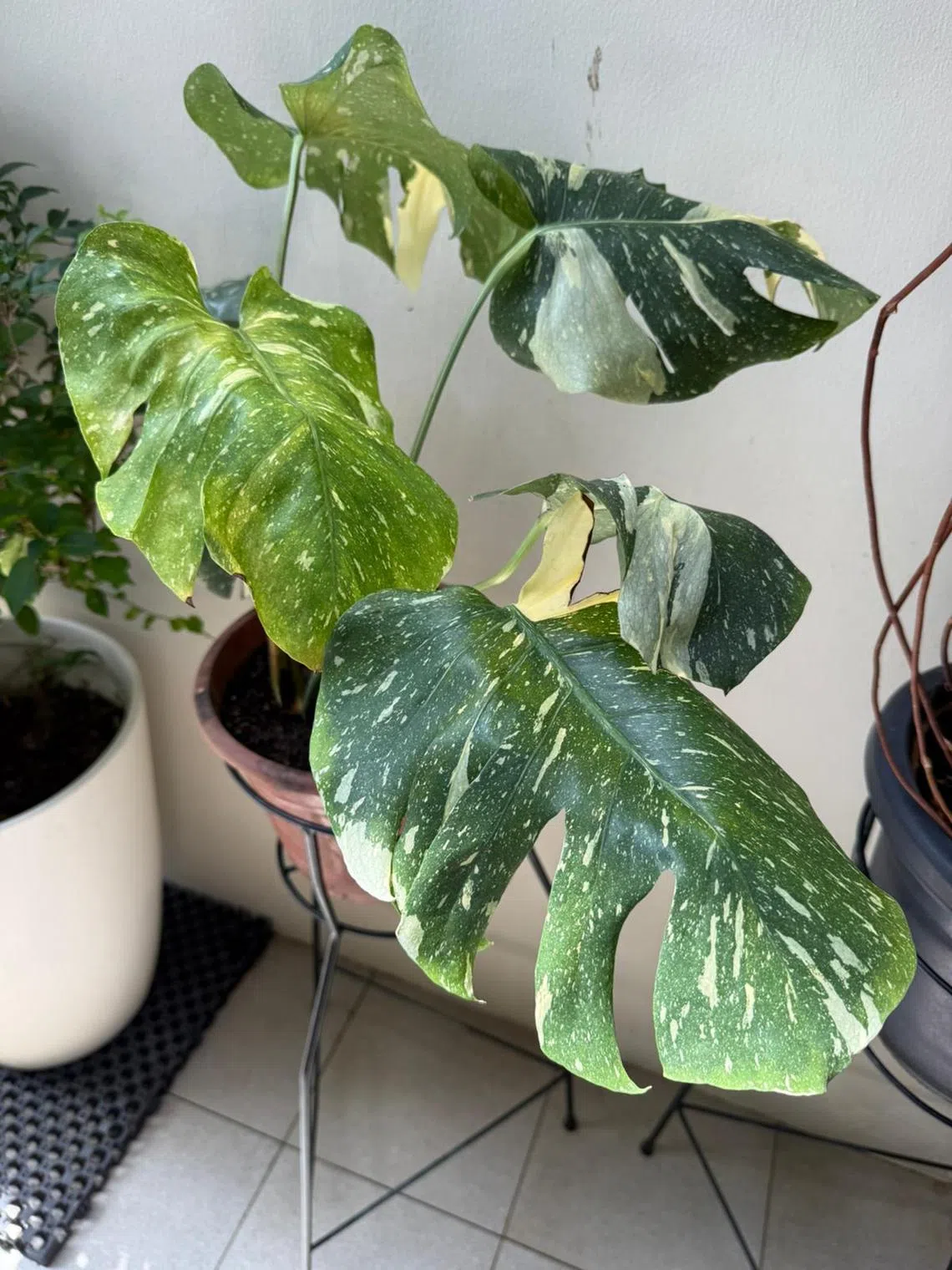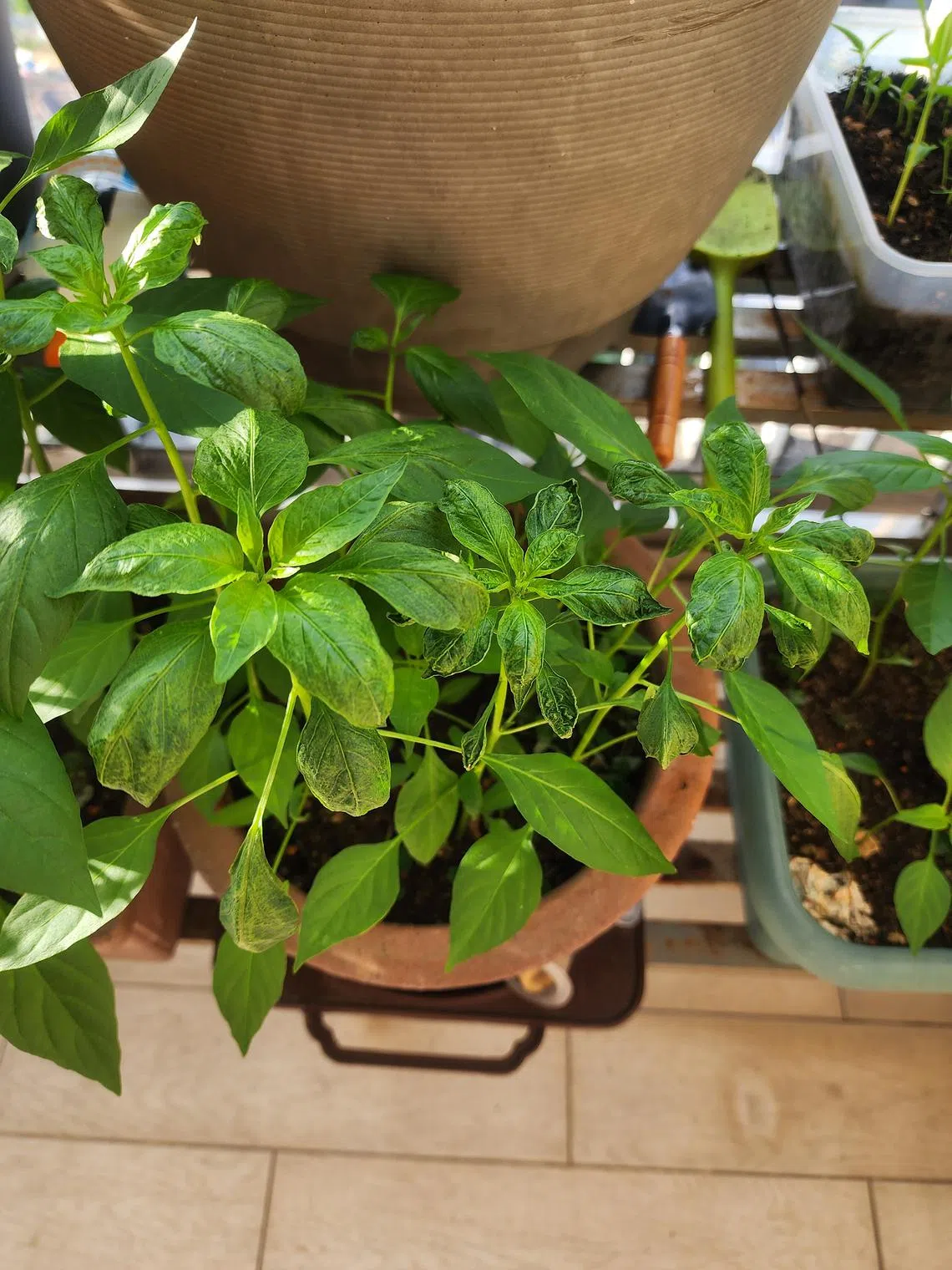Root Awakening: Give orchid more water
Sign up now: Get ST's newsletters delivered to your inbox

Save this orchid by moving it to a better growing location.
PHOTO: ROBIN CHNG
Wilson Wong
Follow topic:
Orchid needs humid environment
My orchid’s leaves have been turning yellow and brown before falling. What is wrong? I have reduced watering and now spray the stems occasionally instead, but to no avail. Some stalks have become bare.
Robin Chng
Your orchid looks like the Vandaceous type, and the wrinkled leaves indicate that the plant is drying out and needs more water. The plant can be saved by moving it to a better growing location.
Depending on the species, orchids need to be grown in a semi-shaded or sunny location for best results. A lack of light will lead to weak, sluggish growth and leave the plant prone to pest attacks. The brown portions of the leaves may be due to pests or disease.
Such orchids produce aerial roots and are often grown with minimal soil. They need regular watering and should grow in a humid environment, so they do not dry out. Orchids can be difficult to grow in a high-rise environment due to the lack of such conditions.
Sweet potato plant may be infested with pests

If the infestation is severe, this crop of sweet potato may have to be removed.
PHOTO: ANNIE GOH
My sweet potato leaves have white spots. Are they diseased?
Annie Goh
The white speckles could be due to feeding damage by pests, such as spider mites or thrips. They are very small and not visible to the naked eye. A hand lens will be useful to help you check for their presence.
If the infestation is severe, you may want to remove the entire crop. Practise crop rotation and avoid growing the same species in the same location for a period of time.
Depending on the pest identified, you can spray your plants with summer oil, which will suffocate the pests. Thorough coverage and repeated applications are required to provide adequate control.
Ensure that you observe the withholding period – the time that needs to elapse after spraying the pesticide, before harvesting the produce – and wash the plant thoroughly before cooking and eating the leaves.
Sweet potato is a sun-loving plant and should be grown outdoors under direct sunlight for best results. A healthy plant is less prone to pest attacks.
Use pyrethrins to manage pest population

This white insect may be a leaf hopper, a sap-sucking pest that spreads viral diseases.
PHOTO: ADRIAN LING
What is this white pest on my okra plant? I tried to get rid of it with spinosad and abamatin, and neither were effective.
Adrian Ling
The pest cannot be clearly discerned from the picture submitted. It is probably a leaf hopper, which is commonly found on okra (Abelmoschus esculentus). It sucks plant sap and can spread incurable viral diseases. It will hop or jump when disturbed.
Use a pesticide that will provide rapid knock-down of the pest. Try pyrethrins, which are derived from relatives of the chrysanthemum, or contact chemical pesticides that have the same effect.
Plant will grow towards light source

In an apartment setting, sunlight typically comes from only one direction.
PHOTO: TAN LI SIANG
Why do my Monstera Thai Constellation’s leaves bend outwards? It is kept in a semi-shaded area.
Tan Li Siang
Are you growing your Monstera in an apartment setting? If that is the case – and if you are keeping your plant in the corridor or balcony – the light will typically come from only one direction.
Plants require sunlight to photosynthesise, and will naturally face the direction of the light.
Some gardeners rotate their plants to obtain a symmetrical growth habit. However, this may not work for the Monstera, as it has a particular arrangement of leaves along the stem, and rotation may mar its appearance.
Chilli plant is infested with broad mites

Spray the plant with pesticides such as lime sulphur or abamectin.
PHOTO: TAN ENG KIAT
I have three chilli plants in pots on my balcony, but one has abnormal leaves. What is wrong?
Tan Eng Kiat
Your plants seem to have a broad mite infestation. This is a common pest of this plant species.
You can spray the affected plant with pesticides such as lime sulphur or abamectin. Repeated and thorough application is essential to provide adequate control. Do observe the withholding period before harvesting the plant.
Answers by Dr Wilson Wong, an NParks-certified practising horticulturist and parks manager. He is the founder of Green Culture Singapore and an adjunct assistant professor (Food Science & Technology) at the National University of Singapore.
Have a gardening query? E-mail it with clear, high-resolution pictures of at least 1MB, if any, and your full name to . We reserve the right to edit and reject questions.

